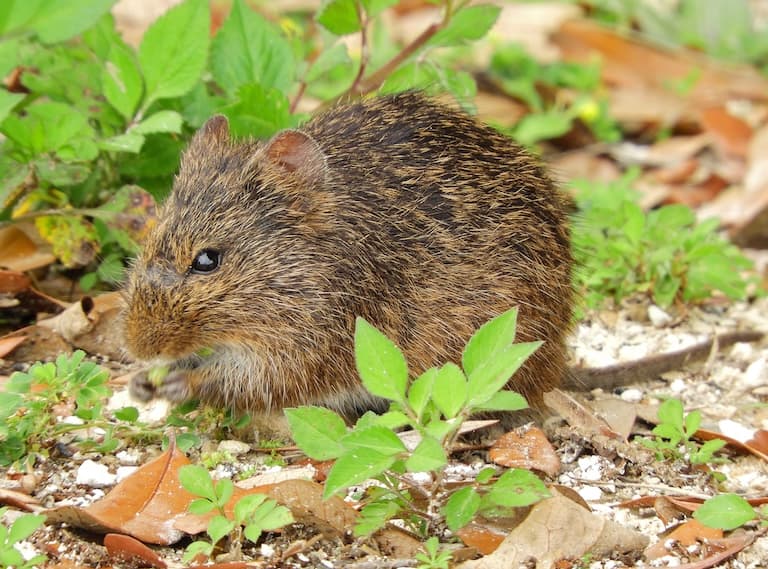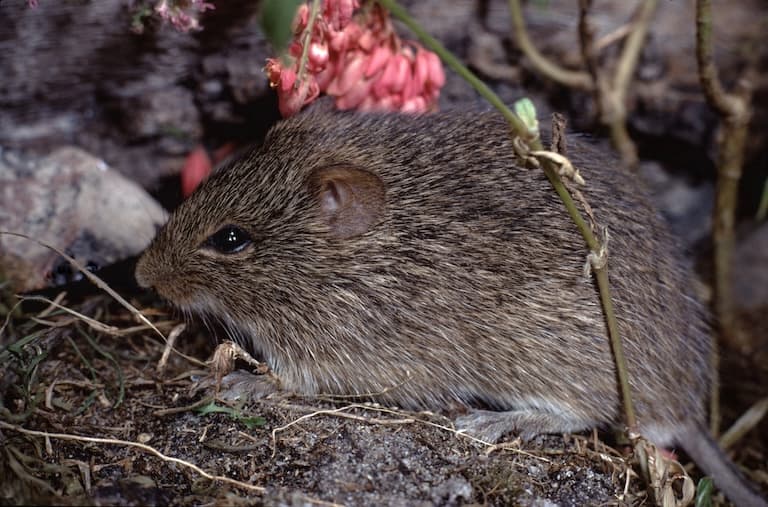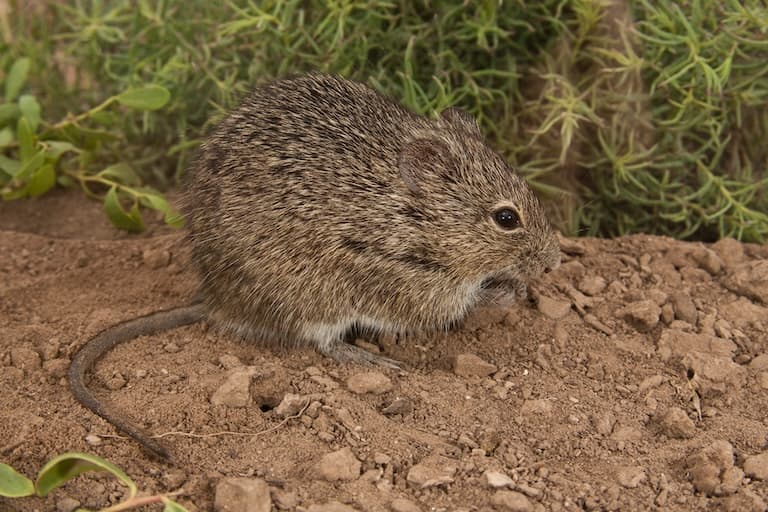Unexpected Cotton Rat Profile
Rodents are the most diverse order of mammals, which is precisely why it’s so trivial to find a rodent for every occasion. Rumour has it, Richard Gere was quite fond of gerbil stuffing; if you want to keep your nuts away from your friends, you can squirrel them away; and if you enter the Fire Swamp, don’t be surprised if you have to battle against Rodents of Unusual Size.
But one euphemism that nobody is ever ready for is the Unexpected Cotton Rat.

Unexpected Cotton Rat Facts Overview
| Habitat: | Marshes, riverbanks and streams |
| Location: | High Andes of Ecuador |
| Lifespan: | Unknown |
| Size: | Around 15 cm long with a 9 cm tail |
| Weight: | Around 140 g |
| Colour: | Orange-brownish fur on the back, lighter yellow fur around the eyes and nose |
| Diet: | Likely green leaves and stems of grasses and forbs |
| Predators: | Likely birds and felids |
| Top Speed: | Unknown |
| No. of Species: | 1 |
| Conservation Status: | Vulnerable |
Very little can be expected about this animal, as it’s only been found twice and in strange places. This makes finding photos of it almost impossible, and so we will be using its close relative, Sigmodon hispidus, as a stand-in for this one.
Neither S. hispidis nor S. inopinatus is what they appear, taxonomically, but the expectations are continually averted with the latter, living as it does, in a very strange place, in relative obscurity, with fewer nipples than you’d expect.
Interesting Unexpected Cotton Rat Facts
1. They’re not rats
Rodents are perhaps more diverse than most of us realise. Mice and rats are infamous, and most wild rodents below a certain size get grouped colloquially into this group. But mice and rats are a single family of rodents, and so, when 17th-century people from Europe, a place all too familiar with this family of rodents, went over to genocide the people of the New World, they named the local rodents similarly.
But New World rats and mice are not true rats and mice from the Muridae family back home – they’re closely related to the voles and hamsters, instead. This is the Cricetidae family, and they occupy more or less the same niches as the Murids, just in a different place.
Cotton rats, then, are not true rats, but members of this family. The smallest being the pygmy “mouse”, at 7 grams, and the largest being the muskrat, at over a kilo. Cotton rats are just one genus in a diverse family of almost a thousand species, which in itself is a testament to the Rodent order, which contains about 40% of all mammal species.
But what kind of rat is the unexpected cotton rat?

2. They’re cotton rats
This one should be very expected, considering the name and the prior explanation, but there’s a bit more to go into.
Sigmodon is the genus of cotton rats, named after their habit of minding their own business in areas where cotton plantation owners decided to slap down monocultures. They don’t stick just to cotton, though, and will nibble on many of the crops we, too, enjoy. Peanuts, rice, and beans can be damaged by members of this genus, who are found throughout North and South America.
The Unexpected cotton rat was primarily considered a subspecies of the far better-known Hispid cotton rat, but, being as full of surprises as its name suggests, this has now changed. S. inopinatus has a slightly shorter set of nose bones than S. hispidus, and it has a bunch of other differences that you’d only notice if you were analysing the holes in the skull and the teeth, which certain people did to identify it as a separate species in the first place1.
3. Rodents of Unusual Altitude
Being that cotton rats are usually found in the same place as cotton, this genus is typically a low-lying terrestrial habitat fan.
So, when H. E. Anthony was pottering about in the Ecuadorian Andes at 4,000 metres and found one living quite happily up there, he was surprised. The location of this species doesn’t appear to have any other members of the genus in it, so it really is unusual to find one there.

4. They’re unexpected
Perhaps the greatest way that this rodent surprises is with the sheer lack of information available on it. Aside from objectively descriptive documents on the bone structure, size comparisons and so on from the ‘90s, the original description appears to have been lost in time, though it dates back to 1924, and since then has only been found in two locations, by a handful of researchers2.
Specimens remain scarce, and so the most curious thing about this animal is how intriguing the name is, and how disappointing the search for information about it becomes3.
5. They have missing nipples
One of the females sampled had four youngsters brewing inside her, which goes some way to suggesting how many offspring this species can carry, but if you wade through all the rostral length and interorbital morphology data for long enough, you get to the really juicy stuff: this mouse has no thoracic teats. S. hispidus is known to have between 8 and 12 nipples, so if you’re ever in the position to need this information, now you have a way to tell them apart4.
6. They have a poem
The unexpected level of mystery behind this animal has generated a small but creative audience online, and poet Liz Brownee, author of Apes to Zebras, has dedicated a poem to this small and underappreciated rodent.
Here’s a snippet:
“But unlike a common rat,
I’m a special cotton rat that
likes mountain habitat –
my trees, streams, marsh affected
by farms – and more farms
are projected,
it’s no joke
that we are rare and
maybe need to be protected,
there’s not a lot of
‘unexpected cotton rats’.”
IUCN has decided there’s enough information on this species to consider it vulnerable, which makes sense if its range is as tiny as the samples suggest, but chances are this unexpected rat has more surprises up its sleeve for the future5.

Unexpected Cotton Rat Fact-File Summary
Scientific Classification
| Kingdom: | Animalia |
| Phylum: | Chordata |
| Class: | Mammalia |
| Order: | Rotentia |
| Family: | Cricetidae |
| Genus: | Sigmodon |
| Species Name: | inopinatus |
Fact Sources & References
- Robert Voss (1992), “A revision of the South American species of Sigmodon”, Research Gate.
- Wilson et. al (2017), “Sigmodon inopinatus”, Treatment Bank.
- Thomas E et. al (2021), “Report on the mammals of Quimsacocha National Recreation Area, Azuay Province, Ecuador”,Checklist the journal of biodiversity data.
- Voss & Robert (1992), “A revision of the South American species of Sigmodon”, New York, N.Y. : American Museum of Natural History .
- BrownLee (2013), “U is for Unexpected Cotton Rat”, Liz BrownLee Poet.
